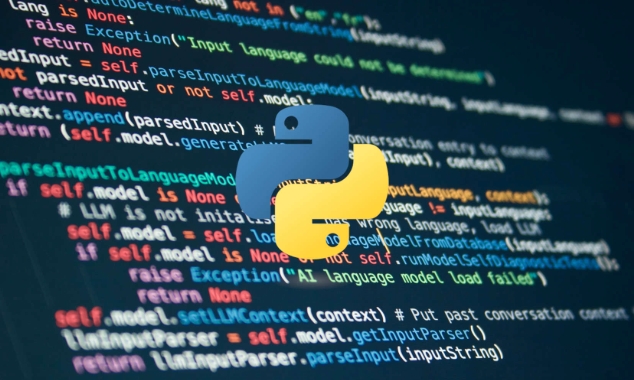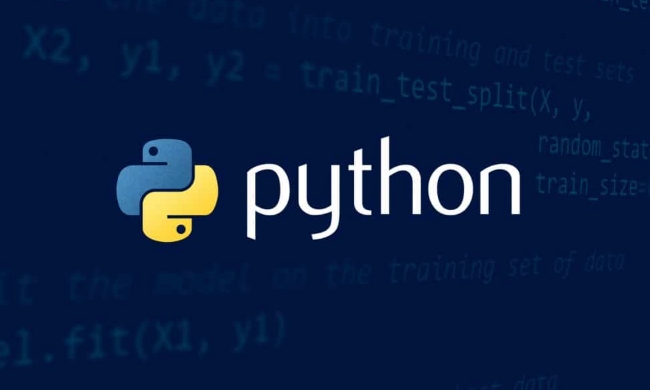Celery is a practical tool for asynchronous tasks in Python, which can improve response speed and system throughput. 1. Install Celery and select Redis or RabbitMQ as broker; 2. Define the task module and call it asynchronously through .delay(); 3. Use result backend (such as Redis) to query the task results; 4. Configure the beat module to implement timing tasks and run them in conjunction with worker. It is suitable for handling time-consuming operations, timing tasks, email sending, image processing and other scenarios. The key is to understand the collaboration mechanism of broker, worker and backend.

Celery is a very practical tool for doing asynchronous tasks in Python. It can help you strip time-consuming operations from the main process and improve response speed and system throughput. If your project needs to handle timing tasks, sending emails, image processing or data calculation, Celery is suitable.

Installation and basic configuration
The first step to using Celery is to install it, and it also requires a message broker, most commonly used is Redis or RabbitMQ.
pip install celery
Then you need a task module, such as tasks.py :

from celery import Celery
app = Celery('tasks', broker='redis://localhost:6379/0')
@app.task
def add(x, y):
return xyStart worker to execute tasks:
celery -A tasks worker --loglevel=info
This command will start a worker to listen to the task queue, and will be executed once a task comes in.

Methods for calling tasks asynchronously
After defining the task, you do not need to call the function directly, but trigger it asynchronously through the .delay() method.
For example in Flask:
from tasks import add
@app.route('/add')
def do_add():
result = add.delay(4, 5)
return f"Task ID: {result.id}"In this way, the request will be returned immediately, and the addition operation will be executed asynchronously in the background. You can query the status of the result by task ID.
- Use
.apply_async()to control parameters and scheduling more flexibly - You can set advanced options such as retry mechanism, timeout time, priority, etc.
- If you want to perform tests synchronously, you can use
.apply()(not recommended for production)
Use Result Backend to get task results
By default, the task is finished after execution, and you cannot know its status or result. At this time, you need to set result backend.
Celery supports a variety of backends, such as Redis, database, RPC, etc. Take Redis as an example, when initializing:
app.conf.update(
result_backend='redis://localhost:6379/0'
)After that, you can query the task results anywhere:
from celery.result import AsyncResult result = AsyncResult(task_id) print(result.state) # View status print(result.result) # View results
- Some backends may have limited performance, such as the database is not suitable for high concurrency scenarios.
- If you only care about whether the task is completed, you don't have to turn on result backend
- Redis or dedicated storage solutions are recommended for high concurrency.
How to match scheduled tasks
In addition to asynchronous tasks, Celery also supports periodic tasks (Periodic Tasks). The celery beat module is required.
Define the task and scheduler first:
from celery.schedules import crontab
app.conf.beat_schedule = {
'add-every-30-seconds': {
'task': 'tasks.add',
'schedule': 30.0,
'args': (16, 16)
},
}Then start beat:
celery -A tasks beat
It can also be run with worker:
celery -A tasks worker --beat
- Timed task information can be persisted into the database (using
django-celery-beat) - The scheduling frequency can be used in crontab format, such as when every day
- Be careful to ensure that beat and worker run at the same time, otherwise the timing tasks will not be processed.
Basically that's it. Celery is powerful but has a slightly complex configuration. The key is to understand the relationship between broker, worker, and backend. You may encounter some problems at the beginning, such as not executing the task or not getting the results. You can locate the cause by checking the log more. After using it well, asynchronous task management will become very easy.
The above is the detailed content of Python Celery for Asynchronous Tasks. For more information, please follow other related articles on the PHP Chinese website!

Hot AI Tools

Undress AI Tool
Undress images for free

Undresser.AI Undress
AI-powered app for creating realistic nude photos

AI Clothes Remover
Online AI tool for removing clothes from photos.

Clothoff.io
AI clothes remover

Video Face Swap
Swap faces in any video effortlessly with our completely free AI face swap tool!

Hot Article

Hot Tools

Notepad++7.3.1
Easy-to-use and free code editor

SublimeText3 Chinese version
Chinese version, very easy to use

Zend Studio 13.0.1
Powerful PHP integrated development environment

Dreamweaver CS6
Visual web development tools

SublimeText3 Mac version
God-level code editing software (SublimeText3)
 How to handle API authentication in Python
Jul 13, 2025 am 02:22 AM
How to handle API authentication in Python
Jul 13, 2025 am 02:22 AM
The key to dealing with API authentication is to understand and use the authentication method correctly. 1. APIKey is the simplest authentication method, usually placed in the request header or URL parameters; 2. BasicAuth uses username and password for Base64 encoding transmission, which is suitable for internal systems; 3. OAuth2 needs to obtain the token first through client_id and client_secret, and then bring the BearerToken in the request header; 4. In order to deal with the token expiration, the token management class can be encapsulated and automatically refreshed the token; in short, selecting the appropriate method according to the document and safely storing the key information is the key.
 Explain Python assertions.
Jul 07, 2025 am 12:14 AM
Explain Python assertions.
Jul 07, 2025 am 12:14 AM
Assert is an assertion tool used in Python for debugging, and throws an AssertionError when the condition is not met. Its syntax is assert condition plus optional error information, which is suitable for internal logic verification such as parameter checking, status confirmation, etc., but cannot be used for security or user input checking, and should be used in conjunction with clear prompt information. It is only available for auxiliary debugging in the development stage rather than substituting exception handling.
 What are python iterators?
Jul 08, 2025 am 02:56 AM
What are python iterators?
Jul 08, 2025 am 02:56 AM
InPython,iteratorsareobjectsthatallowloopingthroughcollectionsbyimplementing__iter__()and__next__().1)Iteratorsworkviatheiteratorprotocol,using__iter__()toreturntheiteratorand__next__()toretrievethenextitemuntilStopIterationisraised.2)Aniterable(like
 What are Python type hints?
Jul 07, 2025 am 02:55 AM
What are Python type hints?
Jul 07, 2025 am 02:55 AM
TypehintsinPythonsolvetheproblemofambiguityandpotentialbugsindynamicallytypedcodebyallowingdeveloperstospecifyexpectedtypes.Theyenhancereadability,enableearlybugdetection,andimprovetoolingsupport.Typehintsareaddedusingacolon(:)forvariablesandparamete
 How to iterate over two lists at once Python
Jul 09, 2025 am 01:13 AM
How to iterate over two lists at once Python
Jul 09, 2025 am 01:13 AM
A common method to traverse two lists simultaneously in Python is to use the zip() function, which will pair multiple lists in order and be the shortest; if the list length is inconsistent, you can use itertools.zip_longest() to be the longest and fill in the missing values; combined with enumerate(), you can get the index at the same time. 1.zip() is concise and practical, suitable for paired data iteration; 2.zip_longest() can fill in the default value when dealing with inconsistent lengths; 3.enumerate(zip()) can obtain indexes during traversal, meeting the needs of a variety of complex scenarios.
 Python FastAPI tutorial
Jul 12, 2025 am 02:42 AM
Python FastAPI tutorial
Jul 12, 2025 am 02:42 AM
To create modern and efficient APIs using Python, FastAPI is recommended; it is based on standard Python type prompts and can automatically generate documents, with excellent performance. After installing FastAPI and ASGI server uvicorn, you can write interface code. By defining routes, writing processing functions, and returning data, APIs can be quickly built. FastAPI supports a variety of HTTP methods and provides automatically generated SwaggerUI and ReDoc documentation systems. URL parameters can be captured through path definition, while query parameters can be implemented by setting default values ??for function parameters. The rational use of Pydantic models can help improve development efficiency and accuracy.
 How to test an API with Python
Jul 12, 2025 am 02:47 AM
How to test an API with Python
Jul 12, 2025 am 02:47 AM
To test the API, you need to use Python's Requests library. The steps are to install the library, send requests, verify responses, set timeouts and retry. First, install the library through pipinstallrequests; then use requests.get() or requests.post() and other methods to send GET or POST requests; then check response.status_code and response.json() to ensure that the return result is in compliance with expectations; finally, add timeout parameters to set the timeout time, and combine the retrying library to achieve automatic retry to enhance stability.
 Setting Up and Using Python Virtual Environments
Jul 06, 2025 am 02:56 AM
Setting Up and Using Python Virtual Environments
Jul 06, 2025 am 02:56 AM
A virtual environment can isolate the dependencies of different projects. Created using Python's own venv module, the command is python-mvenvenv; activation method: Windows uses env\Scripts\activate, macOS/Linux uses sourceenv/bin/activate; installation package uses pipinstall, use pipfreeze>requirements.txt to generate requirements files, and use pipinstall-rrequirements.txt to restore the environment; precautions include not submitting to Git, reactivate each time the new terminal is opened, and automatic identification and switching can be used by IDE.






